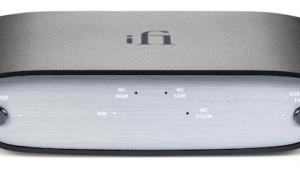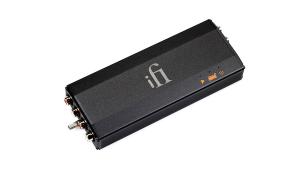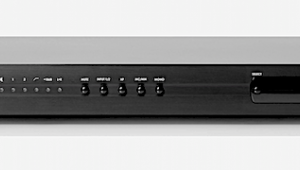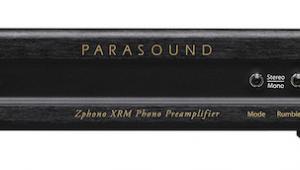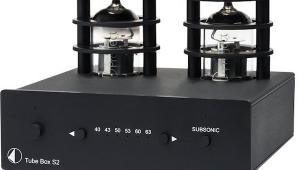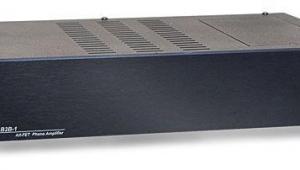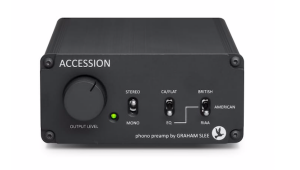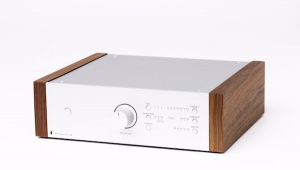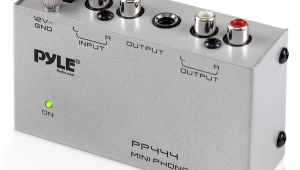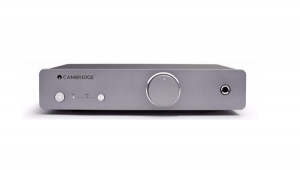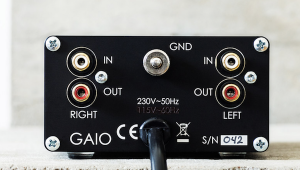Pass Aleph Ono phono preamplifier Measurements
A complete set of measurements was run on the Pass Aleph Ono from its unbalanced outputs, and another, more limited, set from its balanced outputs. Unless otherwise noted, the results presented are for the unbalanced outputs. After shipping to Santa Fe, one channel of the preamp was inoperative in the moving-magnet setting (I suspect a bad lead or selector DIP switch); the moving-magnet measurements presented here are for the left channel only.
The Aleph Ono's output impedance measured 297 ohms unbalanced and 833 ohms balanced—higher than specified, but still perfectly acceptable. The MM input impedance measured 47k ohms, the MC input impedance 100.2 ohms (with the 100 ohm internal setting). The S/N for the moving-coil input, rounded off to the nearest dB, was an excellent 72dB (left) and 76dB (right) from 22Hz to 22kHz (unweighted), 70dB (L) and 73dB (R) from 10Hz to 500kHz (unweighted), and 81dB (L) and 81dB (R) A-weighted. The corresponding MM figures are 89dB, 78dB, and 96dB, respectively (all for the left channel).
The DC offset at the Aleph Ono's outputs measured 2.9mV in the left channel, 1.8mV in the right. The Aleph Ono is noninverting at its unbalanced output, and pin 2 of the balanced output is positive. As supplied, the MM gain was 39.4dB, the MC 59.7dB. In both cases, the gain from the balanced output was 6dB higher.
The Ono's frequency response is shown in fig.1. Only the moving-coil response is shown; the moving-magnet response, and the response from the balanced outputs, are virtually identical to those in fig.1. The Aleph Ono's crosstalk is shown in fig.2. While there is a significant difference between the two channels, look at the absolute values: In each case, they are so low as to be of no audible significance and also confirm the Ono's very low noise.

Fig.1 Pass Labs Ono, RIAA error into 100k ohms at 1mV/1kHz input (bottom) and 100mV (top) (right channel dashed, 0.5dB/vertical div.).

Fig.2 Pass Labs Ono, crosstalk (from top to bottom): L–R, R–L (10dB/vertical div.).
The THD+noise percentage, plotted against frequency, is shown in fig.3. As expected, the MC distortion is higher than the MM. To keep the influence of noise to a minimum, these readings were taken at very high input levels: 10mV for the MC input, 110mV for the MM. (The same input levels were used for the crosstalk measurements in fig.2.) These high levels, combined with the characteristics of the RIAA equalization curve, are responsible for the rise in the MM distortion above 1kHz. The latter should be of no concern in normal operation. Note also that though the same input levels were used for these measurements for both the balanced and unbalanced outputs, they actually resulted in an output 6dB higher for the balanced.

Fig.3 Pass Labs Ono, THD+noise vs frequency at 10V output at (from top to bottom at 10kHz): MC unbalanced, MC balanced; MM balanced, MM unbalanced (right channel dashed).
The THD+noise vs output voltage curves for both MM and MC are shown in fig.4. The minimum values of the curves correspond to the values chosen for the readings shown in figs.2 and 3.

Fig.4 Pass Labs Ono, distortion (%) vs output voltage (V) into (from bottom to top): MC, MM.
The Aleph Ono's MM phono overload margin is good; using an unequalized input, 1% THD+noise was reached at an input of 203mV (32.2dB overload margin ref. 5mV) at 1kHz, 1.9V (31.5dB) at 20kHz, and 17.3 mV (30.8dB) at 20Hz. The corresponding MC figures are 19.8mV (32dB overload margin ref. 500µ;V) at 1kHz, 201mV (32.1dB) at 20kHz, and 1.7mV (30.6dB) at 20Hz—all excellent figures.
There were no surprises in the Aleph Ono's excellent test-bench results.—Thomas J. Norton
- Log in or register to post comments





